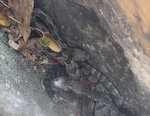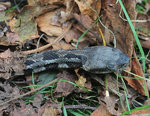 Narrowsburg
NarrowsburgLight Rain Fog/Mist, 43°
Wind: 8.1 mph
 Narrowsburg
NarrowsburgWith fall just around the corner, most animals are preparing for the long cold season ahead. A few early broad-winged hawks have started their migration south, bears are eating as much food as they …
Stay informed about your community and support local independent journalism.
Subscribe to The River Reporter today. click here
This item is available in full to subscribers.
Please log in to continue |



With fall just around the corner, most animals are preparing for the long cold season ahead. A few early broad-winged hawks have started their migration south, bears are eating as much food as they can find and squirrels are caching nuts in the ground or in other hiding spots. The courtship calls of birds have quieted down and it is clear that the appearance of new baby animals has long passed—or has it?
In late August to early September, baby timber rattlesnakes (neonates) make their first appearance. All spring and summer, the female rattlesnakes that were gravid basked on sunny ledges, trying to keep their body temperatures warm enough to properly incubate the embryos that they carried. They ate little or no food during this time (an individual female will only become gravid every two to three years on average). Unlike many snake species that lay eggs, timber rattlesnakes bear their young live.
The newborn neonates appear as tiny adults. Their patterns are very distinct with gray shades and not much of the yellow or brown color seen in some adults. The neonate timber rattlesnakes have only a few weeks outside before they need to follow scent trails of adult snakes to their den or hibernaculum. As they are not tolerant of cold temperatures, most rattlesnakes are in the den by October.
Comments
No comments on this item Please log in to comment by clicking here